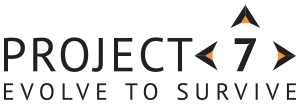
In a recent webinar, our Managing Partner Ryan Ramsey spoke about his early career as the captain of the HMS Turbulent, a Trafalgar class submarine of the Royal Navy. At the time he had no knowledge or training in Lean methodologies but still managed to use some of the tactics he would later learn after joining Project7.
One such example was his desire to improve the dive speed of the submarine. Despite what Hollywood has taught us, this is a complicated manoeuvre with over 200 individual steps and requiring the involvement of the entire crew.
The complexity of this manoeuvre meant he would never be able to accomplish his goal on his own. He would need the skills and expertise of his crew to help fine tune each step or where possible, remove redundant ones all together.
This presented a number of challenges but by involving his crew in the process, challenging them to get better results and giving them the responsibility to find better solutions the goal was achieved.
He knew some changes would fail but he also knew he had an existing process to revert back too and that failure still taught them something if you apply fast learning.
But how does this apply to leaders in a business environment?
Assign Responsibilities not Task Lists
Handing over responsibility can be hard for any leader. When doing it, many will worry by asking themselves questions like; Will they do what I need? Will they do it in time? Have they really understood what I asked of them? Worse is the feeling that teaching a team member a task will take twice as long as doing it yourself. For the busy leader this extra time seems not only wasteful but an added pressure to their already overflowing diary.
The result? Teams are handed task lists not responsibilities.
But why is this a bad thing? The job still gets done and clearly defined processes are what we need to aim for if we’re going to improve efficiencies and reduce waste.
These points are certainly true. Task lists allow a job to be completed the same way each and every time. They allow you to identify where a process is not followed and catch errors early. You can more accurately predict how long a job will take and they mean each employee is not ‘reinventing the wheel’ but instead benefiting from past learning’s.
This last point of benefiting from past learning’s is where problems creep in however. For a task list to exist someone must have sat down and wrote out their learning’s in a clearly defined way for others to follow. They probably even amended it when they found team members kept misunderstanding certain steps or added in steps they had missed out. In other words, this individual took responsibility for an area of the business and documented the best way they knew to complete a certain job, task or action.
The danger occurs when this is where the learning process ends. The task list is seen as ‘done’ and is never revisited or questioned. Overtime the process becomes more of a tradition and anyone who questions it is quickly told ‘it’s the way we’ve always done it’. Even if the process was the most efficient one at one time, changes to technology, environment and customer demand mean it might have become outdated.
As leaders, if all we do is assign task lists to our team members we can only expect them to be concerned with getting the job done. They have no scope, desire or incentive to look at quality, efficiency, waste, cost or any other aspect that could be improved. They don’t seek out new responsibilities or look for new challenges.
Assigning responsibility to an individual allows them to start thinking beyond the task and to wider implications. Is there a way of automating this? Could we do this faster? Can we deliver something better?
In Conclusion
Much of leadership comes down to having the ability to let go. If you give responsibility, you get responsibility in return. It’s underpinned by your belief and trust that your team are more than capable of delivering what you’re asking of them, and you’ll support them on the journey. And that’s the reality. Sometimes, you just have to stay out of their way and let them find the answers.
To circle back to Ryan, when he joined the crew of the HMS Turbulent the dive time was 8 minutes. After going through this process of improvement, which involved his entire crew, the dive time was reduced to under 2 minutes.
Assigning task lists to his crew would never have delivered such impressive results. It was only by giving his crew the collective responsibility of improving this important manoeuvre that such gains were made.
If you ask Ryan about this he won’t say he improved things, he always says the crew did it. Ryan provided the vision but it was each member of the crew who brought their expertise to the challenge to try new ways of doing things in an effort to find the most optimum solution.

